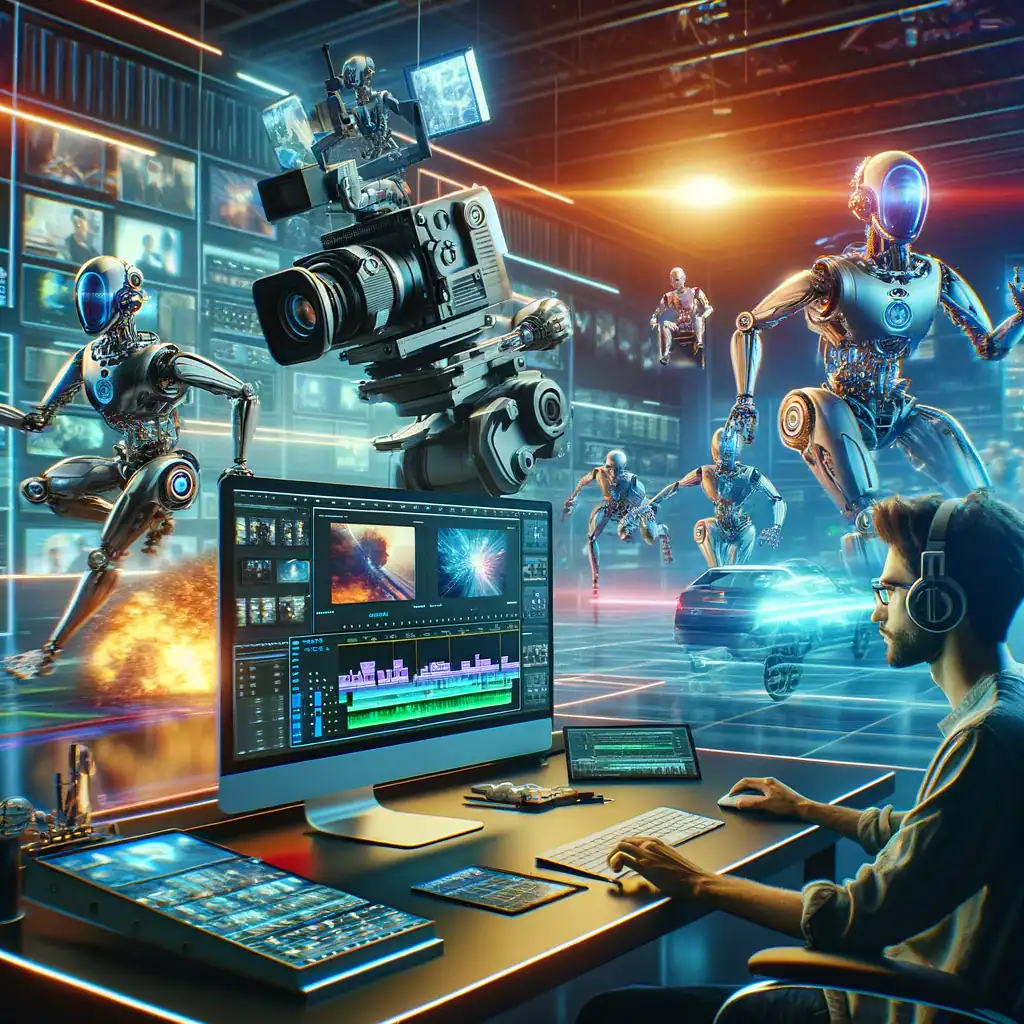Share via:
Creating videos for your business is essential in today’s digital landscape, as it offers numerous benefits that can drive growth and success. Video content is highly engaging and easily digestible, making it the preferred medium for many consumers. By leveraging this format, businesses can effectively communicate their message and capture their audience’s attention. Videos also facilitate better information retention, as they combine visual and auditory elements, leading to a more profound impact on the viewer.
Furthermore, video content can significantly boost a company’s online presence, as search engines and social media platforms often prioritize it in their algorithms. By incorporating videos into their marketing strategy, businesses can build brand awareness, foster trust, and ultimately increase conversions while adapting to the ever-evolving preferences of their target audience.
Table of Contents
ToggleTips for Video Creation for Your Business
-
Define your Objectives
Start by clearly outlining your goals for the video. Are you aiming to increase brand awareness, generate leads, or educate your audience? Having a clear objective will help guide your content and overall strategy.
-
Know your Target Audience
Identify and understand your target audience’s needs, preferences, and challenges. This will help you create content that resonates with them, increasing the likelihood of engagement and conversion.
-
Craft a Compelling Story
A great video tells a story that captures the viewer’s attention and elicits an emotional response. Use storytelling techniques such as conflict and resolution, relatability, and surprise to create a memorable narrative.
-
Focus on Quality
High-quality visuals and audio can make or break your video. Invest in good equipment or hire professionals to ensure your video looks and sounds its best. Remember, poor quality can reflect negatively on your brand.
-
Keep it Short and Simple
Attention spans are short, so keep your videos concise and to the point. Aim for a video length of around 2-3 minutes, and ensure the content is easy to understand and digest.
-
Optimize for Mobile Viewing
With more people consuming video content on mobile devices, make sure your videos are optimized for smaller screens. Use text overlays, clear visuals, and consider vertical video formats for better mobile viewing.
-
Include a clear Call-To-Action (CTA)
Encourage viewers to take a specific action after watching your video, whether it’s visiting your website, subscribing to your channel, or making a purchase. Make the CTA prominent and easy to follow.
-
Optimize for Search Engines (SEO)
Use relevant keywords in your video title, description, and tags to improve its visibility on search engines and platforms like YouTube. This will increase the likelihood of your target audience discovering your video.
-
Share and Promote
Share your video on your website, social media channels, and email marketing campaigns. Consider using paid advertising options, like Google Ads or social media ads, to reach a wider audience.
-
Measure and Analyze Performance
Use analytics tools to track your video’s performance, including views, engagement, and conversions. Analyze this data to determine what’s working, what isn’t, and how you can improve your video strategy moving forward.
-
Be Consistent and Engaging
Posting excessively on social media can lead to content bloat, which may dilute the value of your Videos and decrease overall engagement. Many businesses, in an effort to increase their reach, end up over-posting, resulting in washed-out content that may not resonate with their audience.
Consistency is crucial, but it looks different for every business. It’s important to find the right balance between posting frequency and the value your content provides to your audience.Prioritizing quality over quantity is essential to ensure your content remains engaging and relevant. By creating high-quality content, you can add value to your website, social media platforms, and other marketing channels. This approach helps build topic-specific traffic funnels that direct users to your website and encourage them to take action through calls-to-action (CTAs).
Remember, successful video creation is an ongoing process. Continuously refine your strategy, adapt to new trends, and learn from your audience’s feedback to create engaging and effective videos for your business.
Tips for Video Creation with Artificial Intelligence (AI)
AI-powered tools and techniques can help businesses enhance their video creation process. Here are some AI tips for video creation:
-
AI-based Video Editing
Utilize AI-powered video editing software to streamline the editing process. These tools can help with color correction, object removal, and automated video segmentation, making it easier to create professional-looking content. -
Automatic Subtitles and Transcription
Use AI-driven transcription services to generate accurate subtitles and transcriptions for your videos. This improves accessibility and can also contribute to better SEO performance. -
Content Personalization
Leverage AI to analyze your target audience’s preferences and behavior to create personalized video content that resonates with them. This can lead to higher engagement and conversion rates. -
AI-generated Video Summaries
Create short, AI-generated summaries of your videos to give viewers a quick overview of the content. These summaries can be used as teasers on social media or in email campaigns to entice viewers to watch the full video. -
Video Optimization
Use AI tools to optimize your videos for different platforms and devices. This may include automatic resizing, adjusting aspect ratios, or even creating platform-specific versions of your content. -
AI-Powered Analytics
Track and analyze your video performance using AI-driven analytics tools. These insights can help you understand which aspects of your videos are performing well and which areas may need improvement. -
AI-Assisted Scriptwriting
Utilize AI tools to help with scriptwriting by analyzing popular trends and keywords related to your industry. This can ensure that your video content is relevant, engaging, and more likely to rank well in search results. -
AI-Generated Voiceovers
Use AI-generated voiceovers to create natural-sounding narrations for your videos. This can save time and resources compared to hiring a professional voice actor. -
AI-Driven Content Recommendations
Implement AI tools that analyze your existing video library and recommend related content to viewers based on their preferences and viewing history. This can increase viewer retention and engagement. -
AI-Enhanced Video Effects
Leverage AI-based tools to create advanced visual effects, such as deepfakes or style transfers, to make your videos more visually appealing and engaging.
By incorporating AI into your video creation process, you can save time, increase efficiency, and produce more engaging, tailored content that better serves your target audience.
AI Tools for Video Creation
In the dynamic landscape of digital content creation, Artificial Intelligence (AI) is playing a pivotal role in transforming traditional methods and ushering in a new era of efficiency and automation. Specifically, in the realm of video creation, a myriad of AI-powered tools are now available, streamlining processes from editing to effects, storytelling to sound design, and much more. These tools leverage AI’s ability to analyze, learn, and create, offering unprecedented opportunities for both professional video producers and amateur creators alike. In this article, we’ll delve into a curated list of top AI tools that are revolutionizing video creation.
Here is a Quick List of AI Tools to start with…
Content (Script) Writing:
-
ChatGPT
https://chat.openai.com/
Enhance your content with ChatGPT! Utilize its capabilities to craft engaging scripts, captivating titles, and optimize your SEO. Simply express your specific requirements, and if you’re uncertain, feel free to seek guidance from ChatGPT. While GPT-3 is available for free, access might be restricted during peak usage times. On the other hand, GPT-4 offers improved performance but comes with a monthly cost, ensuring even more impressive results for your projects.
Video Creation from Script:
-
Pictory
https://pictory.ai/
Pictory uses AI to create video summaries from long-form content, such as articles or podcasts. It extracts the most important information and generates a concise video with captions, making it an excellent tool for repurposing content.
Video Creation from Script with an AI Avatar:
-
Synthesia
https://www.synthesia.io/
Transform your text into professional videos using AI avatars and voice-overs, without the need for mics, cameras, or actors. Experience high-quality video creation in over 120 languages, effortlessly bridging communication gaps and reaching a global audience.
Video Creation for Text, Pictures, or Videos:
-
Runway
https://runwayml.com/
Create videos using words, pictures, or short video clips with Artificial Intelligence (AI).
Other:
-
AI Platforms
https://vforg.tech/
A list of over 200+ AI platforms for different uses
ChatGPT: A Simple Explanation
Think of ChatGPT like a very sophisticated digital parrot with a library inside its brain.
This parrot doesn’t actually understand the meaning of what it’s saying. However, it has read so much (millions of books, articles, websites, etc.) that it’s very good at producing responses that sound like they make sense.
You ask it a question, and it searches its “library” to find the best possible response based on what it’s seen before. It doesn’t “know” anything in the human sense, but it can generate answers to a wide variety of questions by drawing on the vast amount of text it has been trained on.
It’s important to remember that while this parrot can generate very informative and seemingly intelligent responses, it doesn’t understand or experience the world like we do. It doesn’t have feelings, beliefs, or desires, and it doesn’t have access to personal data about individuals unless it has been shared with it in the course of the conversation. It’s a tool for generating human-like text based on patterns it has learned.
Share via:



